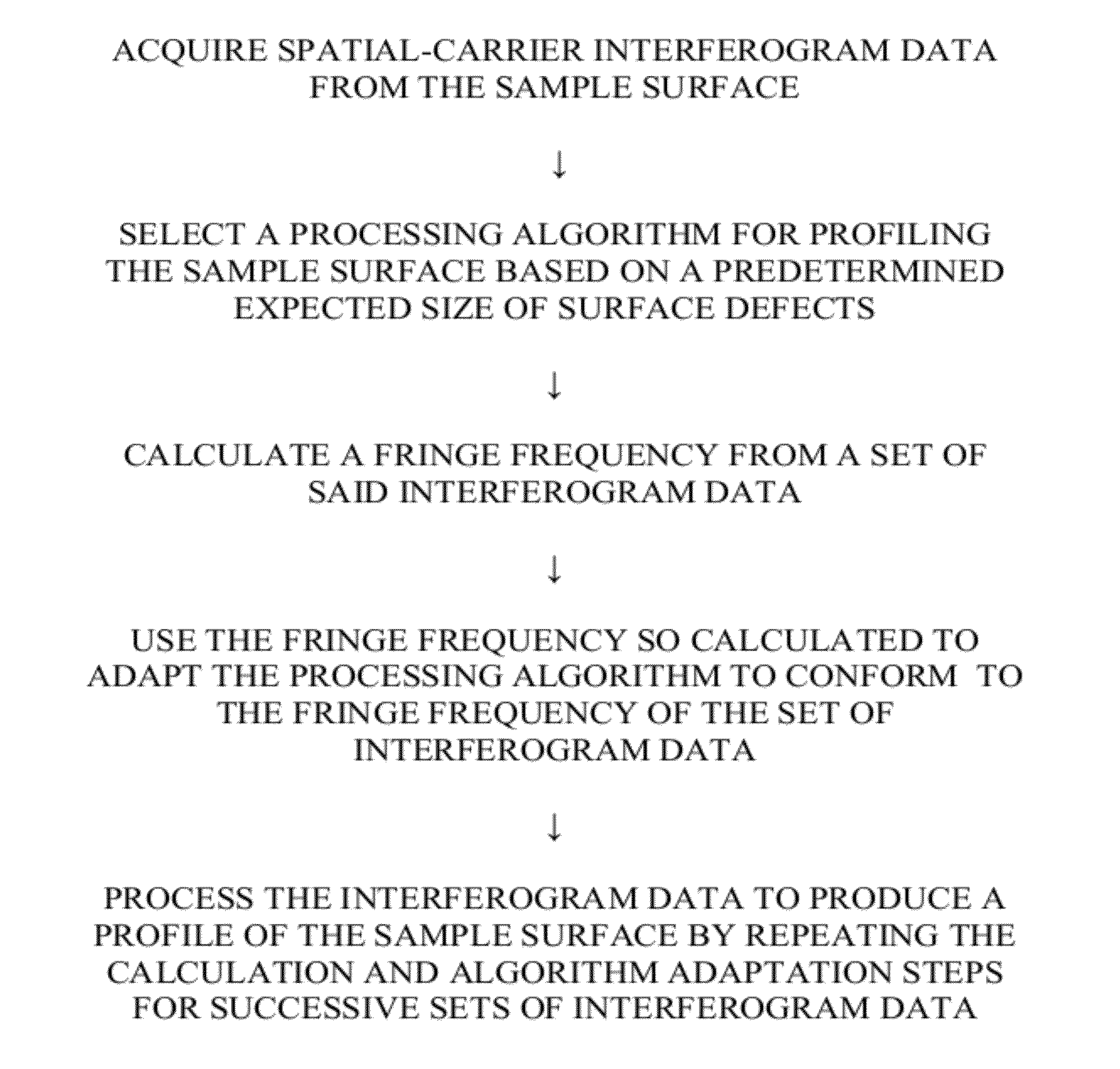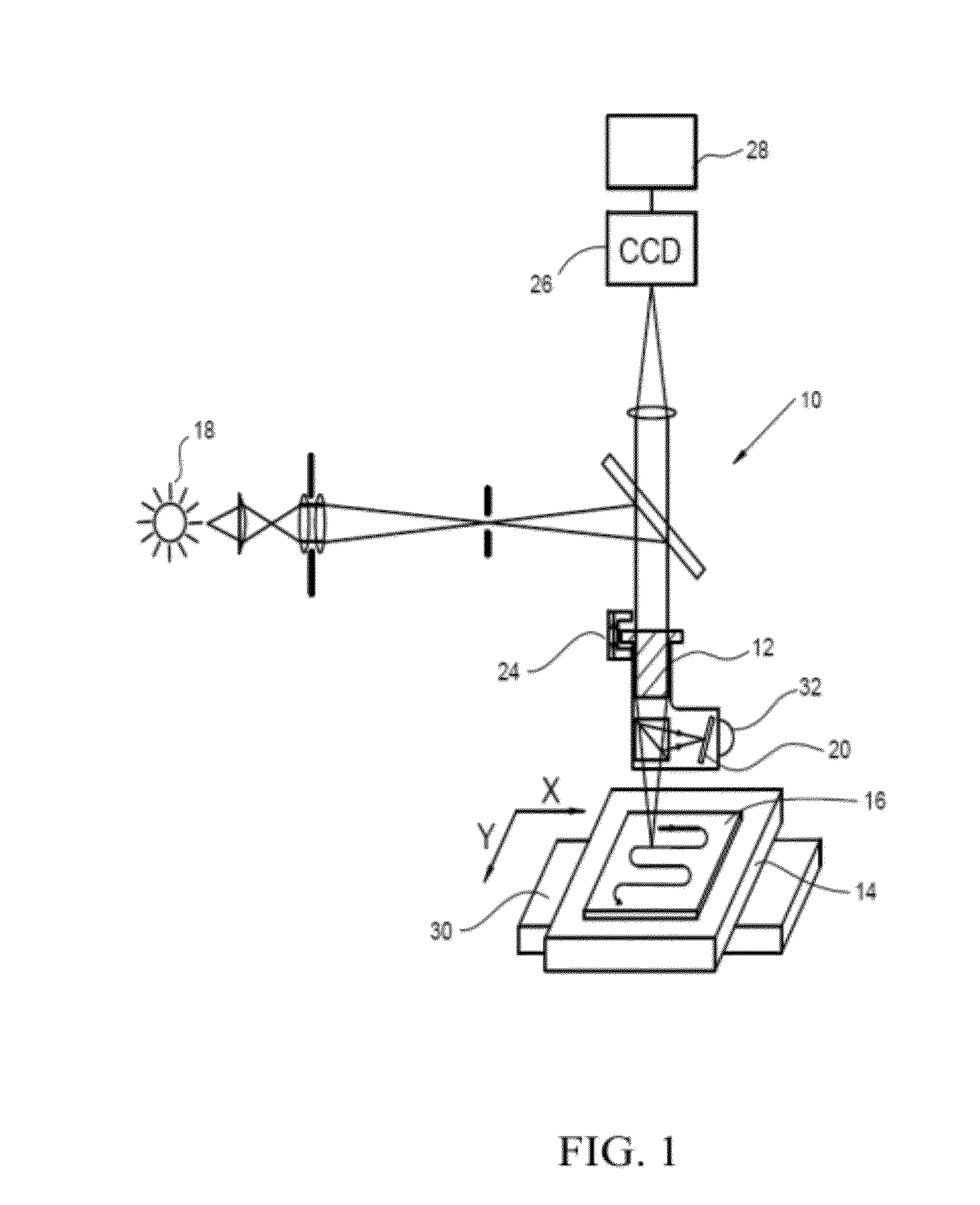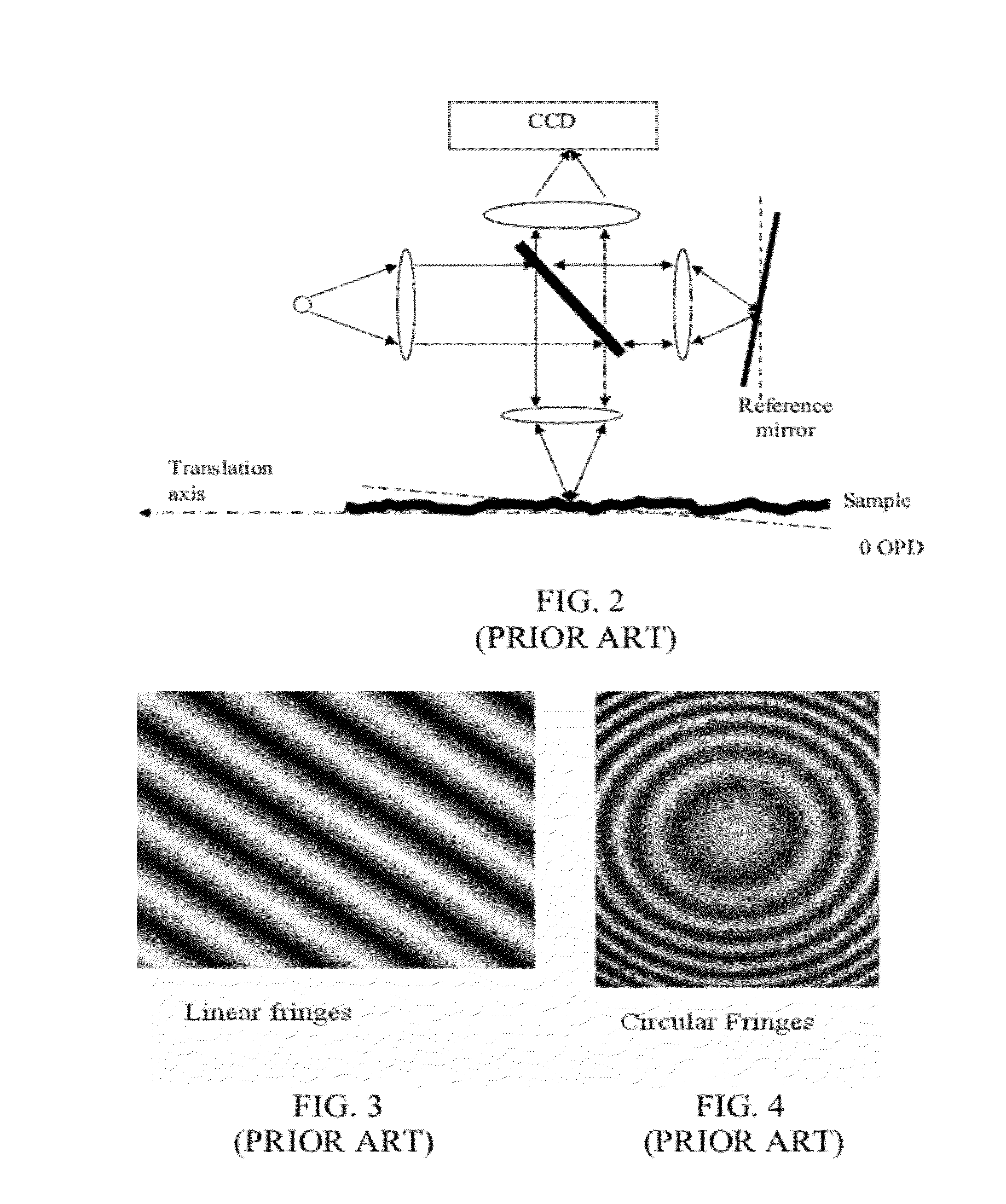Large-surface defect detection by single-frame spatial-carrier interferometry
a single-frame, spatial carrier technology, applied in the direction of mechanical measuring arrangements, instruments, and samples, can solve the problems of prone to produce incorrect surface characterization, defects identified, and samples that are not perfectly flat, so as to improve efficiency and precision, rapid identification of defects, and rapid identification of unexpected irregularities
- Summary
- Abstract
- Description
- Claims
- Application Information
AI Technical Summary
Benefits of technology
Problems solved by technology
Method used
Image
Examples
Embodiment Construction
[0026]The idea of the invention is to modify the PSI algorithm used for single-frame spatial-carrier analysis in order to adapt it to the local slope conditions of the sample surface. This optimizes the performance of the algorithm, which is tied to the spatial fringe frequency of the interferogram being measured, and therefore enables the detection of defects that would otherwise remain undetected. As a result, the single-frame approach becomes suitable for defect detection and its greater speed makes it possible to measure large samples in much more rapid fashion than with conventional vertical-scan (temporal) approaches (PSI or VSI). Once so identified, if a more precise measurement of the defect is needed, a conventional vertical-scan measurement may be performed with data acquired with a separate local scan at a higher magnification. For the purposes of the invention, as described and claimed, the terms correlogram and interferogram are used interchangeably and are intended to ...
PUM
 Login to View More
Login to View More Abstract
Description
Claims
Application Information
 Login to View More
Login to View More - R&D
- Intellectual Property
- Life Sciences
- Materials
- Tech Scout
- Unparalleled Data Quality
- Higher Quality Content
- 60% Fewer Hallucinations
Browse by: Latest US Patents, China's latest patents, Technical Efficacy Thesaurus, Application Domain, Technology Topic, Popular Technical Reports.
© 2025 PatSnap. All rights reserved.Legal|Privacy policy|Modern Slavery Act Transparency Statement|Sitemap|About US| Contact US: help@patsnap.com



